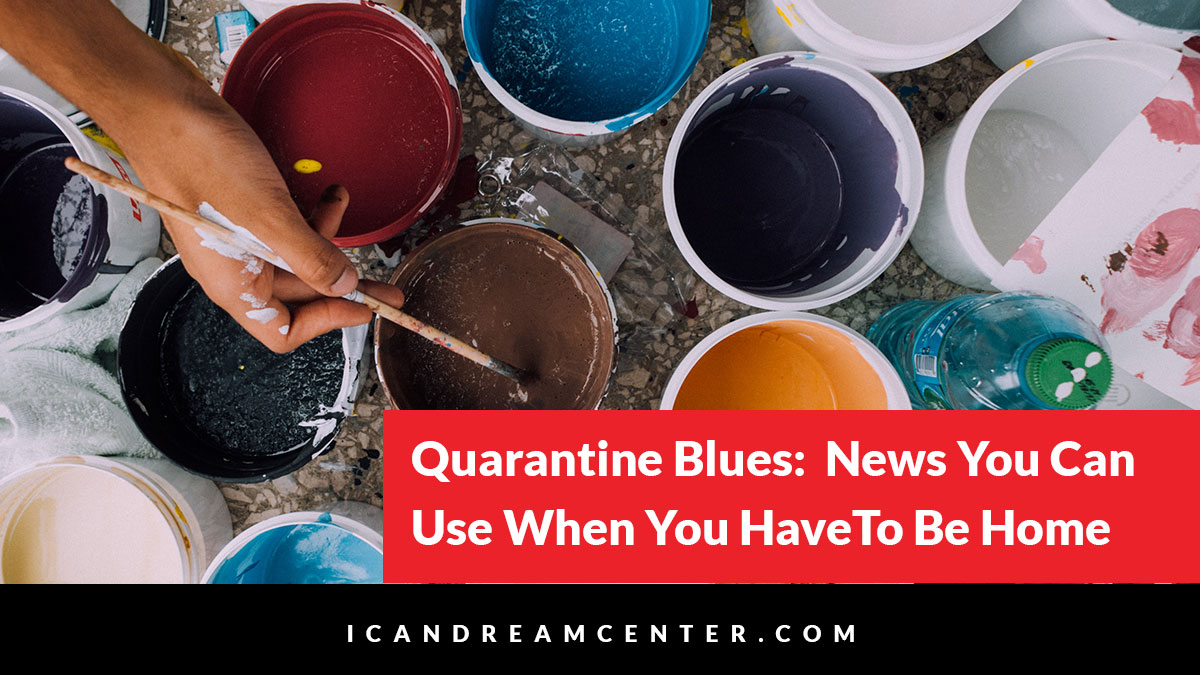
Quarantine Blues: News You Can Use When You Have To Be Home
Being a teen or young adult is difficult no matter what, and the COVID-19 is making it even harder. With quarantines common this winter, many young people are missing out on some of the everyday moments like chatting with friends and participating in class.
For teenagers facing life changes due to the outbreak who are feeling anxious, isolated, and disappointed, know this: you are not alone.
Recognize that your anxiety is completely normal
If school closures and alarming headlines are making you feel anxious, you are not the only one. In fact, that’s how you’re supposed to feel. Keturrah Brown, MSW at iCan Dream Center recognizes that anxiety is a normal and healthy function that alerts us to threats and helps us take measures to protect ourselves. “Your anxiety is going to help you make the decisions that you need to be making right now — not spending time with other people in large groups, washing your hands and not touching your face.” Those feelings are helping to keep not only you safe, but others too. This is “also how we take care of members of our community. We think about the people around us, too.”
While anxiety around COVID-19 is completely understandable, make sure that you are using reliable sources to research things like vaccines, testing, and symptoms. Organizations like the Centers for Disease Control, the Illinois Department of Public Health here in Illinois, as well as Mayo Clinic are good sources of solid scientific-backed health information.
If you are worried that you are experiencing symptoms, it is important to speak to your parents about it. “Keep in mind that illness due to COVID-19 infection is generally mild, especially for children and young adults,” says Keturrah. It’s also important to remember that many of the symptoms of COVID-19 can be treated. She recommends letting your parents or a trusted adult at school know if you’re not feeling well, or if you’re feeling worried about the virus, so they can help.
And remember: “There are many effective things we can do to keep ourselves and others safe and to feel in better control of our circumstances: frequently wash our hands, don’t touch our faces and engage in physical distancing.”
Create distractions
We are under chronically difficult conditions, it’s very helpful to divide the problem into two categories: things I can do something about, and then things I can do nothing about,” says Keturrah.
There is a lot that falls under that second category right now, and that’s okay, but one thing that helps us to deal with that is creating distractions for ourselves. Keturrah suggests listening to music, watching movies, and maintaining a sleep and self-care schedule.
Find new ways to connect with your friends
If you want to spend time with friends while you’re practicing physical distancing, social media is a great way to connect. But it’s not a good idea to have unfettered access to screens and or social media. That’s not healthy, and it may amplify your anxiety. Setting some standards for yourself is helpful. Perhaps turning off the phone at a set time daily could be helpful.
Focus on you
Have you been wanting to learn how to do something new, start a new book or spend time practicing a musical instrument or another hobby? Now is the time to do that. Focusing on yourself is a productive way to look after your mental health.
Feel your feelings
Missing out on events is incredibly disappointing. The best way to deal with this disappointment? Let yourself feel it. When it comes to having a painful feeling, the only way out is through. Go ahead and be sad, and if you can let yourself be sad, you’ll start to feel better faster.
Processing your feelings looks different for everyone. Some kids are going to make art, some kids are going to want to talk to their friends and use their shared sadness as a way to feel connected in a time when they can’t be together in person, and some kids are going to want to find ways to get food to food banks. What’s important is that you do what feels right to you.
